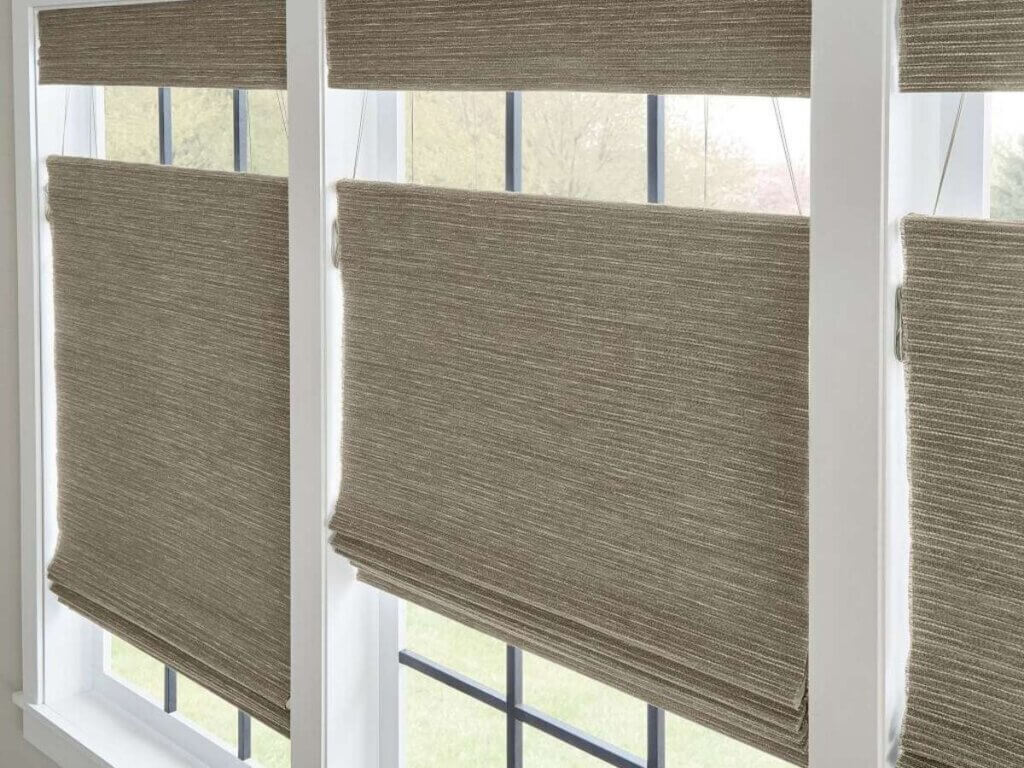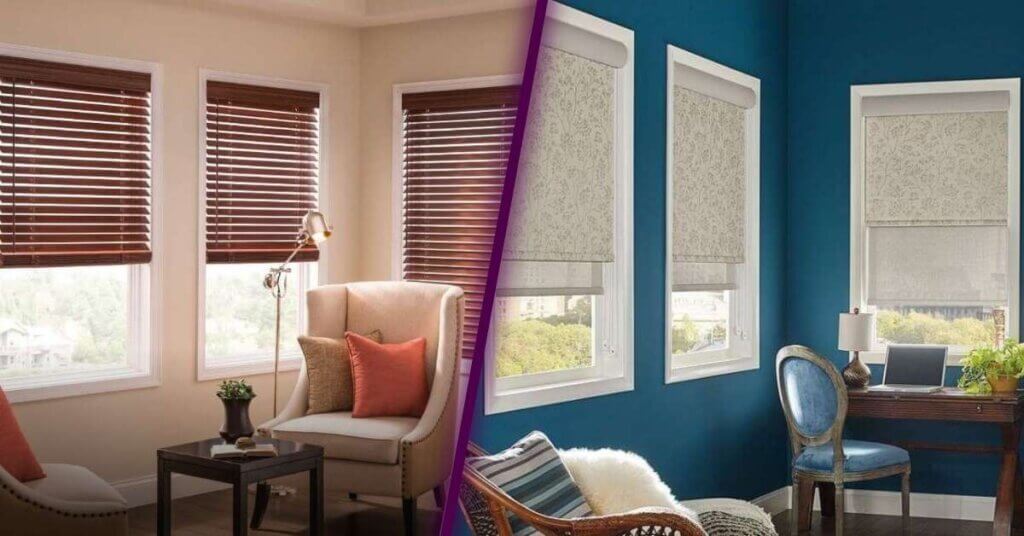Choosing window coverings should be simple, but with so many options, styles, and opinions out there, it’s easy to get overwhelmed. Maybe you’ve asked yourself questions like: Which is better for light control? Which is easier to maintain? Do blinds look outdated? Are shades too delicate for busy homes?
Whether you’re redesigning a single room or updating your entire home, this guide will help you understand the real differences between blinds and shades, beyond just what meets the eye. Let’s explore the pros and cons of each and help you land on a solution that fits both your lifestyle and your space.
Blinds vs. Shades: What’s the Real Difference?
Blinds: Structure, Slats, and Sharp Control

Blinds are made of slats—horizontal or vertical—that can be tilted open or closed for adjustable light control. Materials range from wood and faux wood to aluminum and vinyl, giving you plenty of design and durability options.
Pros of Blinds:
- Precise Light Control: Tilt the slats to control brightness without raising them entirely.
- Durability: Great for high-traffic areas or homes with pets and kids.
- Easy to Clean: A quick dust or wipe-down keeps them looking sharp.
- Classic Aesthetic: Ideal for kitchens, bathrooms, and workspaces.
Cons of Blinds:
- Less Softness: Slats offer function over flow, which may feel rigid in cozy spaces.
- More Parts to Clean: Dust can settle between slats if not maintained regularly.
- Noise Factor: They can rattle with airflow or movement.
Shades: Softness, Simplicity, and Seamless Style

Shades are made from continuous fabric that rolls, folds, or stacks. You’ll find endless options—like Roman, cellular, roller, sheer, and woven wood styles—each offering a unique blend of elegance and function.
Pros of Shades:
- Sleek Appearance: Clean, minimal lines that complement modern and traditional interiors alike.
- Insulation Benefits: Cellular shades, in particular, are energy-efficient champions.
- Custom Fabrics & Opacities: Choose light-filtering, blackout, or layered fabrics to suit any room.
- Whisper-Quiet Operation: Especially with motorization options.
Cons of Shades:
- Limited Light Control: No tilt option—only up or down.
- Fabric Maintenance: Depending on the material, some shades may stain or attract dust.
- Can Be Pricier: Especially when customized with specialty fabrics or motorized systems.
Head-to-Head: Blinds vs Shades Pros and Cons
Feature | Blinds | Shades |
Light Control | High (tilt slats) | Moderate (up/down only) |
Privacy | Adjustable | Varies by opacity |
Aesthetic | Structured, classic | Soft, modern, customizable |
Maintenance | Easy (wipe down) | Varies by fabric |
Durability | Stronger in busy spaces | Depends on fabric |
Energy Efficiency | Low to moderate | High (cellular shades especially) |
Cost Range | Generally lower | Generally higher |
Installation | Straightforward | Varies with style |
Choosing Based on Room and Lifestyle
- For Kitchens and Bathrooms: Moisture-resistant faux wood or aluminum blinds are ideal. They handle humidity well and are easy to clean after cooking or steamy showers.
- For Bedrooms and Nurseries: Shades win here, especially blackout or cellular shades, for their insulation and ability to create a calm, cozy space.
- For Living Rooms and Common Areas: You’ve got flexibility. Woven wood shades offer texture and warmth. Meanwhile, vertical blinds or layered sheers provide light control with a tailored look.
Frequently Asked Questions
1. Can I combine blinds and shades in the same home?
Absolutely. Mixing window coverings by room—or even layering them on the same window—can balance function and style. Just be consistent with hardware and finishes for a cohesive design.
2. Are motorized options available for both blinds and shades?
Yes! Many shades and some blinds (especially roller and cellular styles) can be motorized. This adds convenience, especially for hard-to-reach windows or smart home systems.
3. What’s more pet- and kid-friendly—blinds or shades?
Cordless shades are often safer and quieter, making them great for homes with little ones or curious pets. However, faux wood blinds are extremely durable and withstand daily wear well.
So—Blinds or Shades? It Comes Down to This.
If you started this article asking Which should I choose?, here’s the recap:
- Choose blinds for durability, precision light control, and easy maintenance.
- Choose shades for a softer aesthetic, energy efficiency, and customized light filtering.
At the end of the day, your decision will come down to what you value most in your space—ease of cleaning, design flow, budget, or comfort. And if you’re still unsure, that’s where we come in.
Let’s Make Window Decisions Easy
At Made in the Shade Annapolis, we believe window treatments should reflect your lifestyle, not complicate it. Whether you lean toward structured blinds or graceful shades, we’ll help you narrow down the best fit for your home and make the process simple and stress-free.
Ready to see your options in person? Book your free in-home consultation today and get expert advice tailored to your space.


